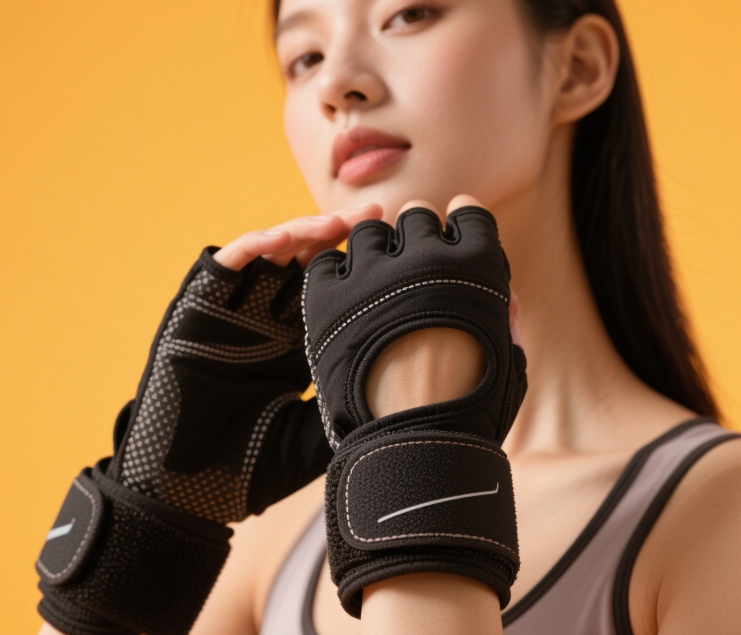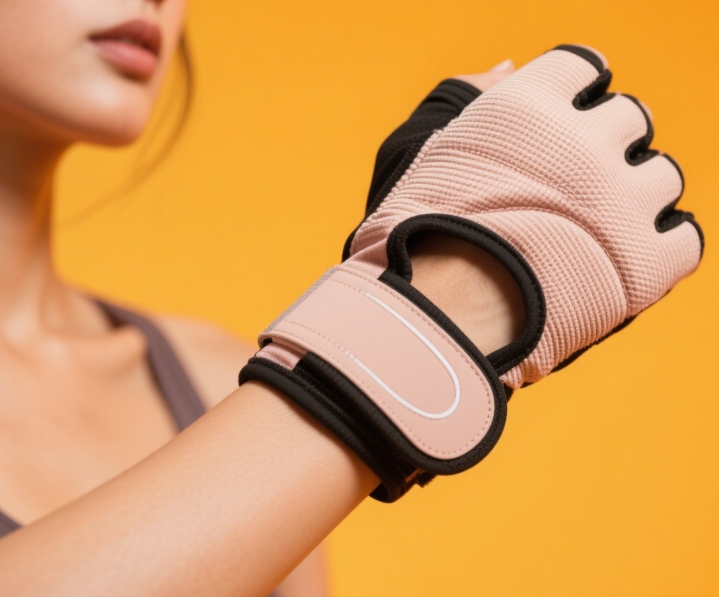Apr 03-2024
How to Choose the Right Convertible Running Gloves for Your Needs
Given the rising focus on women’s fitness, functional gloves providing wrist stability are gaining traction. While standard gloves dominate the market, those integrating wrist support secure higher customer retention. There are key factors influencing demand, including injury prevention and enhanced workout performance. Should fitness trends continue evolving, buyers prioritizing wrist-supported models would gain a competitive edge. Women’s fitness gloves with wrist support, therefore, are not merely accessories but necessity-driven products. Some wholesalers overlook this, mistakenly treating them as niche items, whereas bulk demand suggests otherwise. Whether for CrossFit, weightlifting, or HIIT, gloves reinforcing wrist alignment reduce strain—making them indispensable. Retailers carrying such products, consequently, see fewer returns and stronger brand loyalty. Before sourcing, assess regional preference—though universal in appeal, gym culture varies. Ultimately, wholesale fitness gloves offering dual functionality (grip + support) outperform basic alternatives.
Sourcing reliable manufacturers—especially for women's fitness gloves with wrist support—requires stringent vetting. Not all factories specializing in fitness gear excel in integrating ergonomic support structures. There being numerous suppliers claiming specialization, verifying certifications (ISO, OEKO-TEX) minimizes risk. Were suppliers to cut corners, inferior stitching or weak stabilizer straps would lead to product failures. Buyers must scrutinize past client portfolios, particularly those supplying reputable gym chains. Even if pricing appears competitive, durability testing—simulating months of wear—should precede contracts. Factories blending neoprene with breathable mesh, for example, ensure comfort without compromising wrist rigidity. Additionally, flexible MOQs signal supplier confidence, whereas rigid terms may indicate limited scalability. Sampling multiple batches before finalizing avoids discrepancies between prototype and bulk quality. Long-term partnerships, thereby, hinge on consistent material and construction standards.

Critical in procuring women's fitness gloves with wrist support is material optimization. Traditional leather or synthetic palms—though durable—can lack elasticity, restricting movement during workouts. There being innovations in microfiber and silicone grip patterns, superior traction no longer necessitates stiffness. Should manufacturers prioritize cheap padding, wrist straps might loosen prematurely. Breathability, often underestimated, determines user adherence; gloves trapping sweat deter repeat purchases. Reinforced nylon or Spandex blends provide structure while accommodating wrist flexion. Even if costs rise marginally, moisture-wicking linings and anti-slip silicone prints enhance functionality exponentially. Factories incorporating thermoplastic urethane (TPU) in straps, for instance, deliver adjustable yet unyielding support. Compression around the metacarpals is key—adequate pressure stabilizes without numbness. Consequently, buyers must balance technical specs with wearability to avoid over-engineering.
Private-label opportunities—logos, color blocking, or strap designs—let buyers stand out. Yet, with women's fitness gloves with wrist support, altering core components risks compromising functionality. Were brands to impose aesthetic demands, structural integrity must remain non-negotiable. Laser-cut perforations or gradient dyes, however, add flair without weakening seams. There is growing interest in modular designs, allowing users to detach wrist wraps for casual wear. Embroidery, while premium-looking, must avoid stress points to prevent thread unraveling. Collaborating with suppliers offering digital printing ensures vibrant visuals sans excess bulk. Should seasonal collections be planned, eco-friendly materials (like recycled polyester) appeal to sustainability-driven demographics. Packaging, too, merits attention—minimalist boxes with sizing charts reduce post-purchase confusion. Buyers negotiating exclusivity clauses secure unique designs, deterring copycats. Market differentiation, therefore, hinges on smart customization, not just branding.

Regulatory adherence isn’t optional—especially when marketing wrist-supporting fitness gear. While CE markings suffice for European imports, FDA-compliance boosts credibility in North America. There being no universal glove-specific certifications, general PPE or sporting goods standards apply. Had previous batches failed flammability or phthalate tests, recalls would devastate distributor trust. Labels clearly stating "non-slip" or "medical-grade support" require substantiation to avoid liability. Even if production aligns with ethical labor laws, documentation like REACH reports preempts customs delays. Suppliers reticent about material SDS sheets should raise immediate red flags. Stress-testing samples for strap resilience and seam strength weeds out subpar inventory. Long-term, compliance isn’t bureaucratic hassle—it’s fraud protection. Retailers insisting on transparent supply chains, consequently, mitigate reputational risks.
Cost efficiency—not mere cheapness—dictates procurement success. Low-budget options may exclude critical features, undermining the women's fitness gloves with wrist support value proposition. There being varying tiers (budget, mid-range, premium), aligning with target demographics is crucial. Were distributors to prioritize margins excessively, inferior bulk orders would drive away gym partnerships. Conversely, investing in dual-stitch seams and hook-and-loop closures justifies slight price hikes. Seasonal bulk discounts—provided inventory turnover is swift—improve profitability. Payment terms (30% deposit vs. full prepayment) affect cash flow, hence negotiating flexible schedules aids scalability. Packaging costs, often overlooked, can be bundled into per-unit pricing for transparency. Samples, importantly, should never incur hidden fees—reputable suppliers waive them for serious buyers. Thus, pricing strategies must balance quality retention and market positioning.

Specialize in different kinds of gloves /clothing and outdoor activities products.
14 years experience with gloves development.
Business with many clients from Europe and also many different countries all over the world .

Apr 03-2024
How to Choose the Right Convertible Running Gloves for Your Needs

Apr 10-2025
Are Running Gloves Necessary? The Essential Guide for Sporting Goods Buyers

May 27-2025
Protective Technology of Motorcycle Riding Gloves: From Materials to CE Certification

Jan 16-2025
Gym Full Hand Gloves: Essential for Strength Training